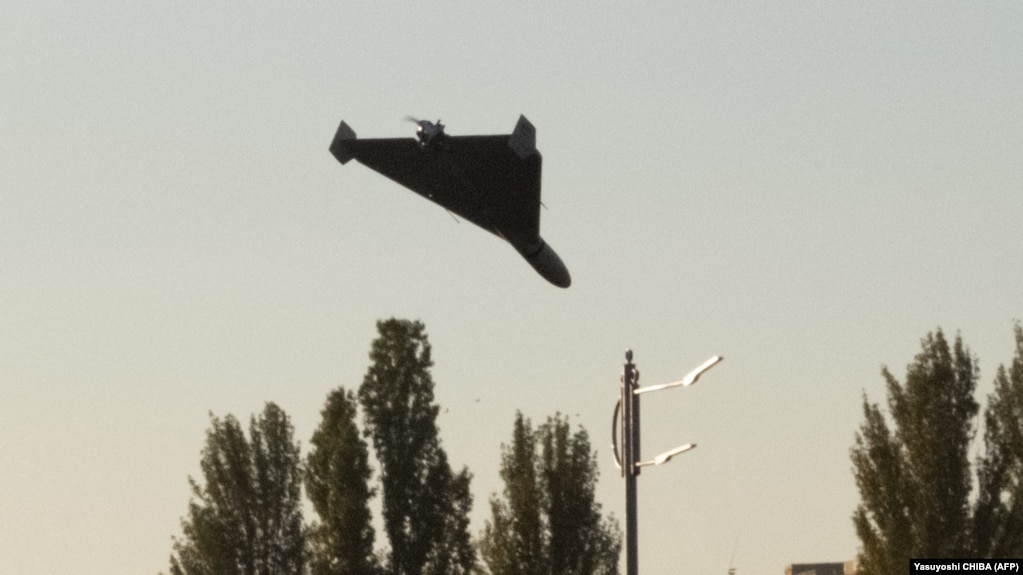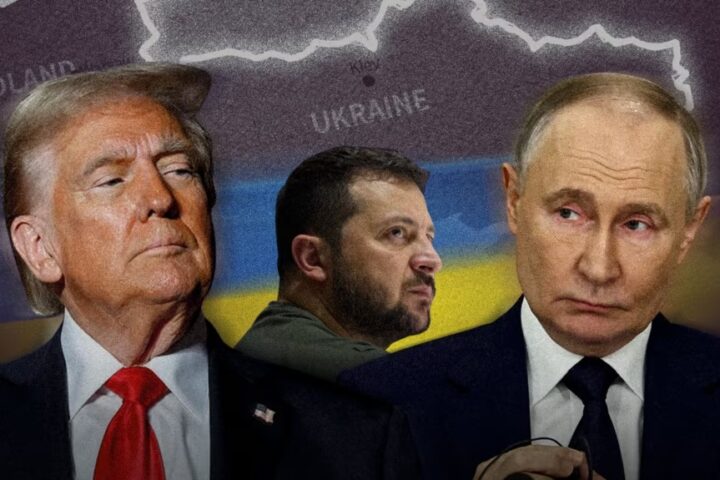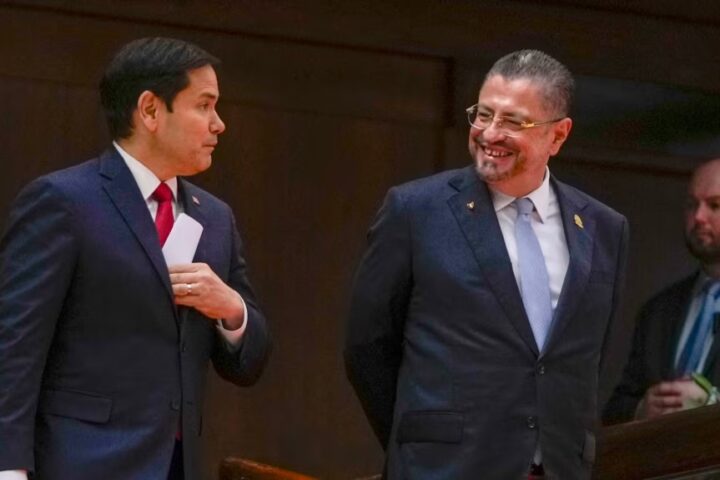Fresh Russian air strikes have targeted Kyiv with Iranian-made drones, killing at least four people in the Ukrainian capital, while other regions in southern and eastern Ukraine were also hit, local officials said.
Mayor Vitali Klitschko said a pregnant woman and her husband were among the dead in Kyiv. Their bodies were pulled from the remains of a destroyed apartment building and there might still be people under the rubble, he added.
The attacks are part of Russia’s efforts to destroy critical infrastructure and sow panic, but they are having a completely different effect than what the Russians expected, Klitschko told RFE/RL.
Klitschko said he was currently asking international partners to provide Kyiv with modern air-defense systems to protect the city from further strikes.
Ukrainian President Volodymyr Zelenskiy said more than 25 settlements were attacked late on October 16 and in the early hours of October 17.
Speaking in his nightly address, he said the armed forces managed to shoot down many missiles and drones.
“But in order to guarantee the protection of our skies and to reduce the capabilities of Russian terrorists to zero, we need significantly more modern air defense systems and more missile support for such systems,” he said.
He said Russia has “no chance on the battlefield” and therefore is trying to “cover up its military defeats with terror.”
The Russian shelling on October 17 — both the drone strikes and other air strikes with missiles — led to new power outages, which he said were being fixed. But he also asked Ukrainians to conserve electricity during peak hours.
U.S. President Joe Biden’s spokeswoman, Karine Jean-Pierre, told reporters that the White House “strongly condemns Russia’s missile strikes” and said the attack “continues to demonstrate [Russian President Vladimir] Putin’s brutality.”
She said the United States “will continue to impose costs on Russia, hold them accountable for its war crimes.”
The Ukrainian Air Force said it destroyed 37 of the 43 drones launched by the Russian military.
Russia has been using so-called suicide drones with increasing frequency in recent weeks to target urban centers and infrastructure, including power stations.
The Ukrainian Foreign Ministry said on October 17 that more than 100 such drones had struck Ukraine in the past week, hitting power stations, sewage treatment plants, bridges, and playgrounds.
“A third of Ukraine’s energy infrastructure was affected,” a ministry statement said.
“We call on Tehran to immediately stop supplying Russia with any weapons. Otherwise, Iran and its leadership will bear the strictest responsibility, including within the framework of international legal proceedings addressing Russia’s crimes against Ukraine.”
Foreign Minister Dmytro Kuleba appealed earlier on October 17 to the foreign ministers of the European Union to impose sanctions on Iran over drone supplies to Russia.
Several of the ministers called for sanctions against Iran over the transfer of drones to Russia.
A U.S. State Department spokesman said the United States agreed that the use of drones supplied to Russia by Iran would violate UN Security Council Resolution 2231.
“Earlier today our French and British allies publicly offered the assessment that Iran’s supply of these UAVs (unmanned aerial vehicles) [to] Russia is a violation of UN Security Council Resolution 2231,” U.S. State Department spokesman Vedant Patel told reporters. “This is something that we agree with.”
Resolution 2231 endorsed the 2015 nuclear deal that limited Tehran’s uranium-enrichment activity while lifting international sanctions.
Under the resolution, a conventional arms embargo on Iran was in place until October 2020. The Security Council at the time rejected efforts by the United States to extend the arms embargo, paving the way for Iran to resume arms exports. But diplomats say the resolution still includes restrictions on missiles and related technologies, including advanced military systems such as drones.
In the eastern region of Sumy, regional Governor Dmytro Zhyvytskiy said three people had been killed and several more wounded in the Russian attacks.
In the south, a big fire broke out at an energy facility in the Dnipropetrovsk region after it was struck by a missile overnight, a local official said early on October 17.
The city council in the southern port of Odesa said Russian warplanes fired missiles on infrastructure facilities in the region early on October 17.
Russia’s Defense Ministry said on October 17 that it had carried out a “massive” attack on military targets and energy infrastructure across Ukraine using “high-precision” weapons.
The ministry said in its daily briefing that it had hit “all designated targets” in Ukraine and also thwarted an attempt by Ukraine to breach its defenses in the southern Kherson region.
On October 10, Russia launched strikes on Kyiv and other cities across Ukraine in the biggest wave of attacks in months.
The attacks killed at least 19 people, wounded 105 others and sparked an international outcry. Russia denies it has been targeting civilians.
Meanwhile, Britain’s Ministry of Defense said in its daily intelligence bulletin on October 17 that Russia was facing more acute logistical problems in the south after the damage to the road-and-rail bridge linking mainland Russia to Crimea caused by a blast on October 8.
In Luxembourg, EU foreign ministers stepped up the bloc’s military support for Ukraine on October 17 by launching a mission to train 15,000 Ukrainian soldiers and providing an additional 500 million euros ($487 million) for weapons.
Kuleba addressed a meeting of his EU counterparts from a shelter in Kyiv and urged them to provide more air defenses and to sanction Iran over drone supplies to Russia.
“While Dmytro Kuleba addresses (us) from a bomb shelter, we raise EU military assistance to 3.1 billion euros ($3 billion) and launch the EU military training mission for Ukraine,” EU foreign policy chief Josep Borrell tweeted from the meeting in Luxembourg.
“Russia’s latest indiscriminate attacks will not shake our determination to support Ukraine, it will only reinforce it.”


















